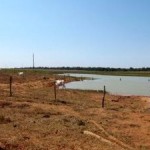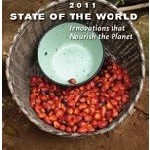
East Lansing, Michigan – Federal mandates and market forces both are expected to promote rising biofuel production, Michigan State University (MSU) biologist Bruce Robertson says, but the environmental consequences of turning more acreage over to row crops for fuel are a serious concern.
Ethanol in America is chiefly made from corn, but research is focusing on how to cost-effectively process cellulosic sources such as wood, corn stalks and grasses. Perennial grasses promise low cost and energy inputs – planting, fertilizing, watering – and the new study quantifies substantial environmental benefits.
“Native perennial grasses might provide an opportunity to produce biomass in ways that are compatible with the conservation of biodiversity and important ecosystem services such as pest control,” Robertson said. “This work demonstrates that next-generation biofuel crops have potential to provide a new source of habitat for a threatened group of birds.”
With its rich variety of ecosystems, including historic prairie, southern Michigan provided a convenient place to compare bird populations in 20 sites of varying size for each of the three fuel feedstocks. Grassland birds are of special concern, Robertson said, having suffered more dramatic population losses than any other group of North American birds.
In the first such empirical comparison and the first to simultaneously study grassland bird communities across habitat scales, Robertson and colleagues found that bugs and the birds that feed on them thrive more in mixed prairie grasses than in corn. Almost twice as many species made their homes in grasses, while plots of switchgrass, a federally designated model fuel crop, fell between the two in their ability to sustain biodiversity.
The larger the plot of any type, researchers found, the greater the concentration of birds supported. But if grasslands offer conservation and biofuel opportunities, Robertson said, the biodiversity benefits could decrease as biofuel grass feedstocks are bred and cultivated for commercial uniformity.
Robertson was a research associate at MSU’s W. K. Kellogg Biological Station in Kalamazoo County during the two-year research project. Today, he is an MSU adjunct entomology professor and a postdoctoral fellow at the Smithsonian Conservation Biology Institute Migratory Bird Center in Washington, D.C. His research colleagues included John A. Hannah Distinguished Professor of Plant Biology, Douglas Schemske and research associate Liz Loomis, both at the Kellogg Biological Station; Patrick Doran of The Nature Conservancy in Lansing; and statistician J. Roy Robertson of Battle Creek.
The research was funded by the U.S. Department of Energy Great Lakes Bioenergy Research Center with support from The Nature Conservancy’s Great Lakes Fund for Partnership in Conservation Science and Economics. Results were recently published in the scientific journal, GCB (Global Change Biology) Bioenergy.
Original Work:
Title of the Paper: “Perennial Biomass Feedstocks Enhance Avian Diversity”
Authors: Bruce A. Robertson, Patrick J. Doran, Liz R. Loomis, J. Roy Robertson and Douglas W. Schemske
Published in Global Change Biology (GCB) Bioenergy (2010), doi: 10.1111/j.1757-1707.2010.01080.x
Click here to read Full Paper:
About Michigan State University (MSU)
Michigan State University has been advancing knowledge and transforming lives through innovative teaching, research and outreach for more than 150 years. MSU is known internationally as a major public university with global reach and extraordinary impact. Its 17 degree-granting colleges attract scholars worldwide who are interested in combining education with practical problem solving. For more information, visit www.msu.edu.
Source: Michigan State University Press Release dated January 6, 2011.













